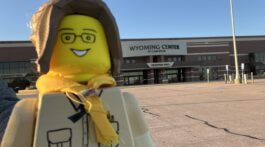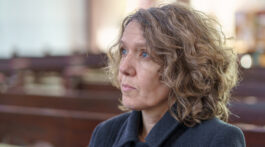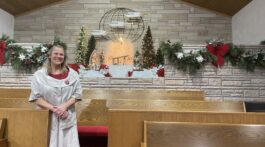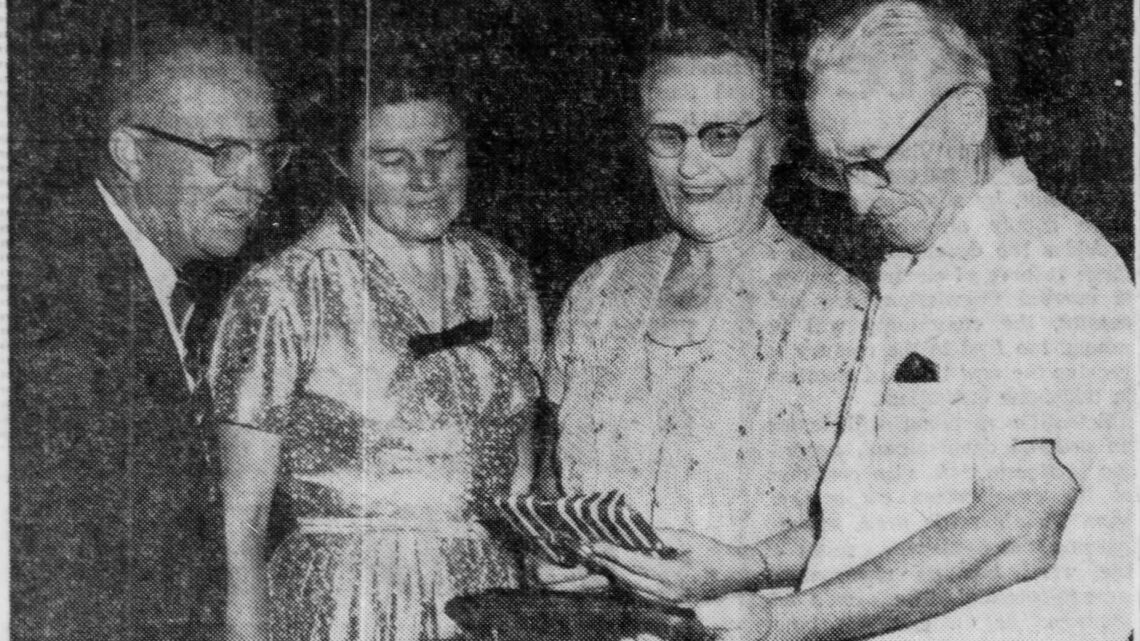In October 2023, I had the pleasure of presenting a paper at the North American Division’s Women in Adventist History Conference. My paper, “The Invisible Seventh-day Adventist Medical Cadet Corps: Women in a Man’s World,” briefly explored the lives of four women who at one time or another were involved in the Medical Cadet Corps between 1938 and 1958. Limited to only twenty minutes in which to speak, my research retrieved far more material than I had time to share then. Thus, it is my privilege in this article, and in others in this series, to more fully explore the lives and contributions of these four women in addition to two more women who should have been included in the original presentation. Part 1 explored the life of Verna Lucille Robson. It is my privilege to share part 2 below.
In the wake of World War I, Adventist students wanted to know the Seventh-day Adventist Church’s position on military service. Adventist veterans thought the Church should provide its young men with training—possibly medical training—to help them obtain noncombatant roles in the event of another war. Conscientious objectors, many Adventists among them, had suffered persecution, courts-martial, and even imprisonment for their refusal to bear arms. In addition, observance of the seventh-day Sabbath put Adventists further at odds with military officers. As world events of the 1930s pointed toward a coming war, the General Conference, on an increasing frequency, considered the issue of noncombatancy and what could be done for young people likely to be affected. Ad hoc committees were formed on multiple occasions with no evident result. Among the names of the many men who repeatedly appeared in these committees is that of one woman, Miss Kathryn Jensen.
Born on April 17, 1891, in New London, Wisconsin, to Danish immigrants, Andrew (Anders) and Mary (Karen Marie Larson) Jensen (1844-1920; 1852-1938), Kathryn Luella Jensen was raised on a farm. By the age of 19 she was teaching in a rural elementary school in Waupaca County, Wisconsin. Some years later, she enrolled in the School of Nursing at the College of Medical Evangelist from which she graduated in 1917. She then moved to Takoma Park, Maryland, where she joined the nursing staff of the Washington Sanitarium. In the two years she spent here, she worked her way up to superintendent of nursing services and director of the sanitarium’s School of Nursing. Hutchinson Theological Seminary (one of Maplewood Academy’s forerunners) in Minnesota called her to become its school nurse in 1920.
To the General Conference
In 1923, Jensen was called to the General Conference Medical Department where she first served as assistant secretary, and after 1932, associate secretary. In both positions Jensen was, in effect, superintendent of nursing education in Adventist sanitariums. At the time this is where all Adventist nursing education took place. In addition to numerous committee assignments and her position as contributing editor to Life and Health magazine, Jensen traveled to Adventist sanitariums across the United States on a regular basis. During these visits she inspected nurse education programs, taught classes, and spoke at commencement services and other events. She also attended education and nursing conferences and wrote a couple of textbooks. She earned a Master’s degree from the Catholic University of American in 1936. Her thesis examined the content of anatomy and physiology courses for nursing students.
On the Medical Cadet Corps Council
With her experience in nursing education, Jenson was a logical choice to join an ad hoc committee assigned to study noncombat military service in response to a letter from college students who requested clarification on the Church’s position. It was a conversation that nearly always included medical training as part of the solution. The committee was appointed on March 25, 1930, but no record of their work was recorded in the General Conference Committee minutes. In fact, if any record survives, it has yet to be located. Consequently, it is impossible to know what Jensen’s contribution, if any, might have been.
Her superintendence of nursing education programs consumed much her time, which may be why she was not part of the next several committees formed to study solutions for Adventist soldiers in a potential military draft. However, that changed on September 1, 1939, when Germany invaded Poland. A yet-to-be-legislated military draft in the United States had become nearly a certainty. Meeting the next month in Lincoln, Nebraska, for the Autumn Council, the General Conference formally established the Seventh-day Adventist Medical Cadet Corps (MCC). The second of twelve resolutions related to the MCC, called for the creation of a council to oversee the preinduction military-medical training. It pulled together all of the secretaries and associate secretaries form the departments of education, religious liberty, Missionary Volunteer, and medical, in addition to the General Conference executive officers, and union conference leaders and educators who had already developed MCC programs in their regional institutions. As associate medical secretary, Kathryn Jensen was the only women named to the MCC Council, which was organized on November 2, 1939.
The council’s first meeting took place on April 12, 1940, with Jensen present. On that day, the council formally voted to adopt the name Seventh-day Adventist Medical Cadet Corps for the program. It also appointed a subcommittee to decide on the curriculum. Jensen was appointed to this committee as well. However, as members of the committee consulted with the United States Army’s medical training officers and debated curriculum in the late summer of 1940, Jensen’s attention turned in another direction.
More Historic Roles
On October 16, 1940, Jensen married Nels Rudoph Nelson, a widowed minister pastoring in Minneapolis, Minnesota. He was the father of five children, the youngest of which was a teenager who would have been still living at home. Jensen resigned from the General Conference and by some accounts became a housewife. However, the demands of World War II opened new opportunities for her as a nurse educator. In a role that foreshadowed the development of the Women’s Medical Cadette Corp in 1942, she taught home nursing classes and trained nurses’ aids for the American Red Cross in Minneapolis. She also worked for the United States Public Health Service, recruiting nurses for the emergency war service.
In 1946 the Nelsons moved to Boulder, Colorado, where Nels served the Boulder Sanitarium and Hospital as a chaplain. During their years in Colorado, Kathryn helped merge the Boulder and Porter sanitariums’ nursing programs in collaboration with Union College, forming a collegiate nursing program for Union College’s students on the Denver campus. In 1949 the Nelsons moved again, this time to Loma Linda, California. Nels continued his work as hospital chaplain, while Kathryn became dean of the College of Medical Evangelists’ School of Nursing.
Kathryn Nelson retired in 1956. She had already published several textbooks during her long career. In retirement she wrote a biography of Kate Lindsay,* an Adventist physician and the founder of the first Adventist school of nursing. Kathryn Jensen Nelson died on December 23, 1970, in Denver, Colorado. She was buried in Colson, California, between her husband, Nels, and her sister, Anna. Remembered for her long and influential career in nursing education, no one remembers Kathryn Jensen was the only woman to ever serve on the Seventh-day Adventist Medical Cadet Corps Council.
Learn more about in Kathryn Luella (Jensen) Nelson in the the Encyclopedia of Seventh-day Adventists.
*Jensen-Nelson Kathryn L. 1963. Kate Lindsay M.d.: Nurse Physician Educator Author 1842-1923. Nashville, TN: Southern Publishing Association.










